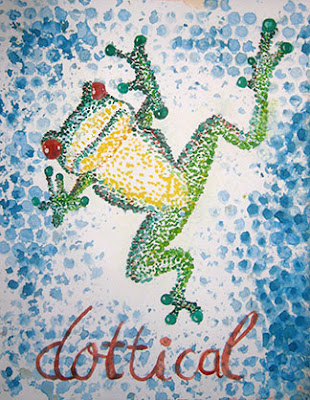 |
| Lost and Found 7/22/16 |
Art Journal Page, Step-by-Step
Art Journal Prompt
M.J. had brought a large poster of a vintage map to our art journal group to tear up and distribute. She couldn't bring herself to tear it (we also have a little inhibition to tear pages out of books) but I was willing to be the first. We decided to use our pieces as our group prompt.Elements preparation
I burned my map pieces with a wood burning tool, spattered them with watercolor and tore them into strips with the intention of making a basket weave. In (1) you can see the before and after of edging them with cocoa brown ink. Because, well, France Papillon would have edged each piece and this page is very much inspired by her work.(2) A friend had some drywall tape he didn't need and I was eager to play. I suspended it over a box and applied gesso with a plastic card. After it dried, I daubed it with watercolor to match the colors I used on the map.
(3) For a focal point, I decided to design my own compass rose. I penciled the points with compass and ruler and looked at some Zentangle patterns for how to ornament. Found a perfect pattern to adapt. I cut my compass rose out with a pair of decorative edge scissors and painted it to integrate with the map. When edging it with the cocoa ink, I accidentally smeared some right in the center. I patched over that booboo with a circle cut from the map (you can see the patch in the final image below).
Layering
(4) Background is watercolor on a gessoed page. I wanted dark colors to peak through the space between the strips in the weave.(5) Background seemed too rough and not integrated enough so I lifted some of the watercolor off with a sponge through a stencil (6). Needed to integrate with color, so I spattered the background with the same mustard yellow that I used on the map. After gluing down all the pieces, I darkened the right and lower edge to balance the focal point.
The surprise: the compass rose came together with very little struggle once I found the zentangle pattern to help me. It is a great tool to have in my artsy toolbox.









